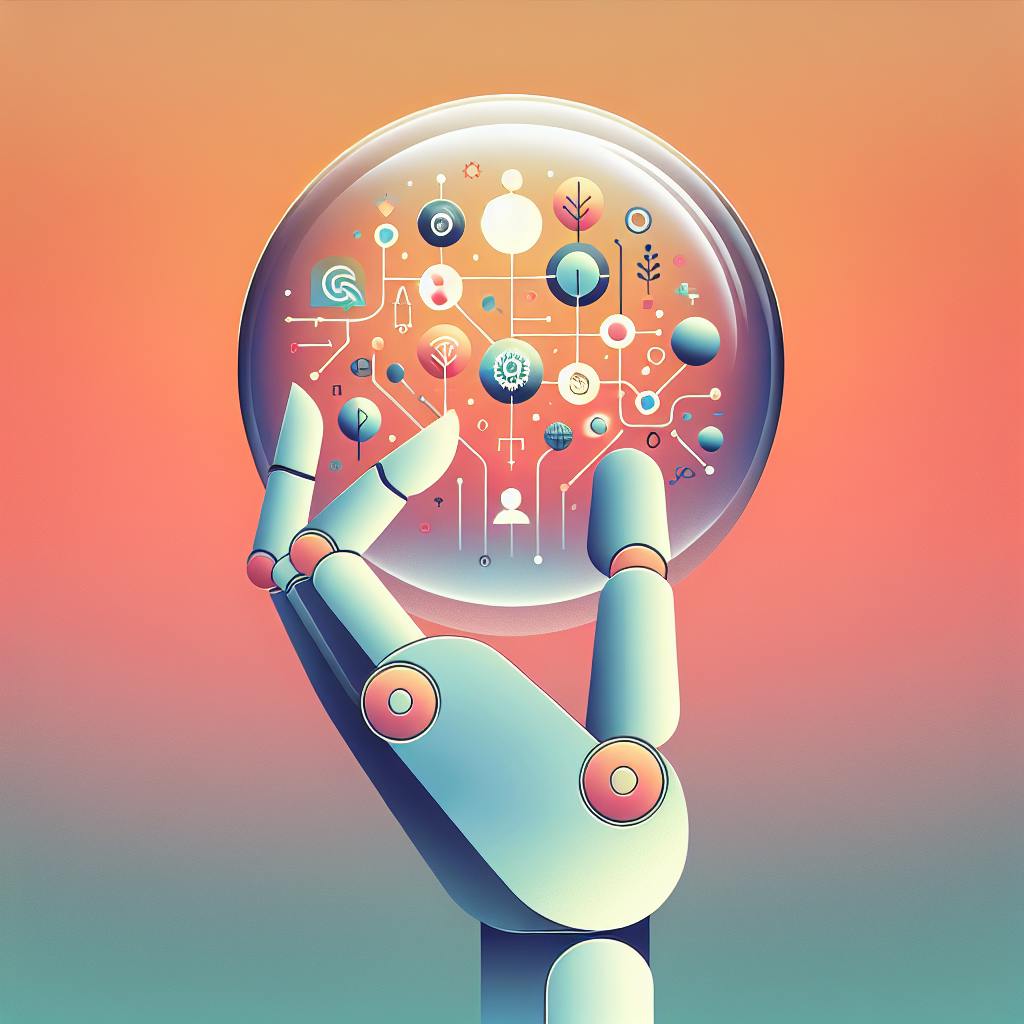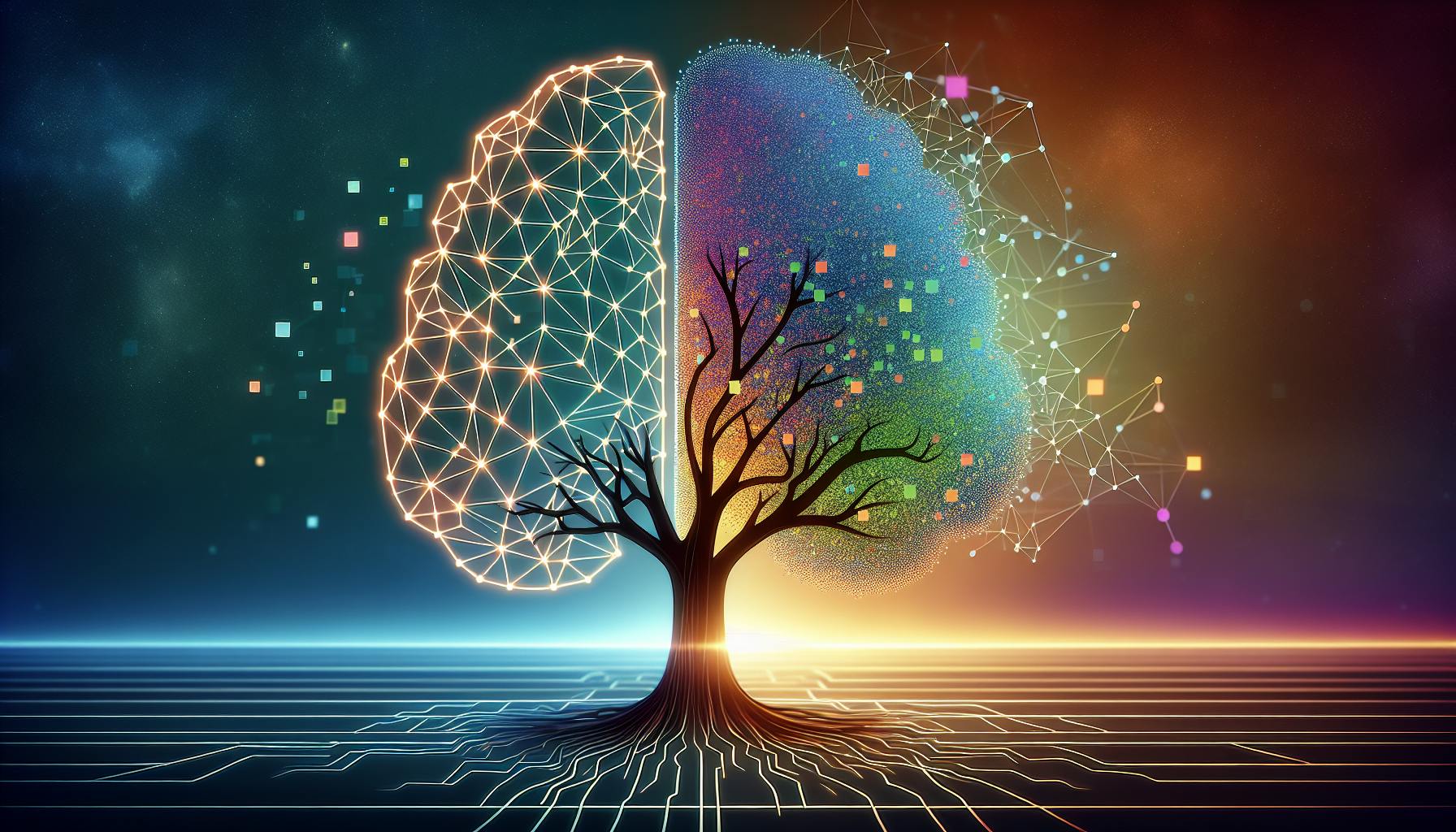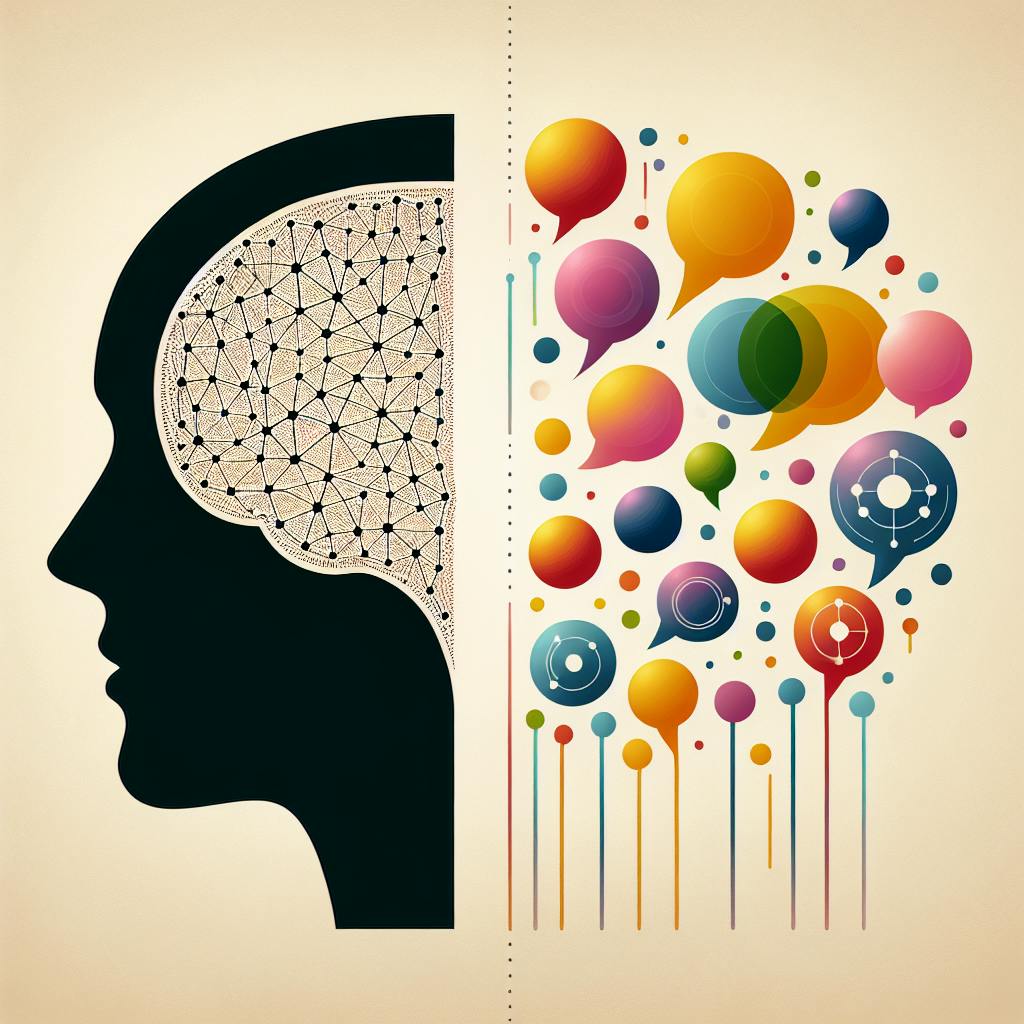Most likely everyone will agree with the statement:
It's really hard to create AI chatbots that have natural, engaging conversations.
Well, OpenAI's revolutionary chatbot models can now craft smarter, more human-like dialogues. By leveraging techniques like fine-tuning, you can build bots that feel like real personalities.
In this post, you'll uncover OpenAI's secrets for making chatbot conversations incredibly smooth - from start to finish. You'll see how to personalize responses, ensure seamless handoffs, and embrace continuous learning for endless enhancement.
Introduction to OpenAI's Chatbot Revolution
Discover how innovations like OpenAI are pushing chatbot AI to new heights, crafting more natural, intelligent conversations.
The Evolution of Chatbots through OpenAI
Chatbots have evolved significantly from the early rules-based scripts, thanks to advanced AI models like those from OpenAI. With deep learning models like GPT-3 and Codex behind the conversations, chatbots can now understand context, personality and provide relevant, thoughtful responses. This leads to much smoother and more meaningful dialogues.
By leveraging large datasets and neural networks, OpenAI has enabled more dynamic conversations that feel closer to interacting with a human. The AI generates responses on the fly based on statistical patterns from vast examples. This allows chatbots to handle a greater variety of questions and edge cases when assisting users.
OpenAI Playground: Crafting Smarter Responses
Tools like the OpenAI Playground let anyone preview these intelligent models firsthand. The interface allows tweaking parameters like temperature and frequency penalty to craft different styles of chatbot responses.
Lower temperatures generally produce more logical and factual answers, while higher settings make conversations more creative and unpredictable. Adjusting the frequency penalty avoids repetitive responses. Playing with these settings helps shape the ideal personality for different chatbot use cases.
By tapping into models like GPT-3 and Codex, the playground democratizes access to cutting-edge AI that empowers anyone to prototype smarter chatbots. The hands-on experience highlights the future possibilities as the technology continues advancing new frontiers.
Personalizing the Experience with Fine-Tuning
Beyond the broad capabilities from pre-trained models, chatbots can further specialize for specific topics by fine-tuning on custom datasets. This adapts the model to specialized vocabulary and patterns for improved relevancy.
For example, a chatbot could fine-tune on legal documents to better address user inquiries around laws and legal rights. Or it may tune on product support articles to provide faster, customized recommendations for troubleshooting issues.
Fine-tuning allows tailoring chatbots to unique user needs and use cases. Over time, they continue personalizing responses based on individual conversation history and behavior. This level of customization delivers a more relevant and delightful experience.
Ensuring Seamless Handoffs to Humans
While cutting-edge AI powers most straightforward queries, smart chatbots also know their limitations. When they encounter unfamiliar questions or topics beyond their confidence, chatbots can automatically escalate conversations to human agents.
Seamless handoffs avoid frustrating dead-ends for users. At the same time, human oversight handles edge cases while further supplying the chatbot with helpful training data for improvement. This balances automation with human assistance for optimized efficiency and accuracy.
As the AI develops, chatbots take on increased responsibilities while humans focus on trickier, subjective areas like emotional support and complex troubleshooting. This symbiotic approach makes the most of both artificial and human intelligence.
Embracing Continuous Learning
With ongoing training, chatbots continue expanding their knowledge and improving conversations. Each interaction provides additional examples for enhancing their understanding across topics.
Over time, this compounding effect allows chatbots to handle a wider breadth and depth of inquiries with increasing precision. Continuous learning through reinforcement methods and expanded datasets accelerates their progress.
Ultimately, innovations from AI leaders like OpenAI will enable chatbots to deliver exceptionally natural, intelligent and rewarding conversations matching human capabilities. We’re just beginning to glimpse the possibilities for the future as the technology marches steadily onward.
Is OpenAI ChatGPT free?
Yes, ChatGPT is currently free to use for everyone. As an AI system powered by OpenAI, the creators are funding the infrastructure and operation costs to keep it freely accessible.
However, OpenAI CEO Sam Altman has indicated that at some point a paid version of ChatGPT will likely be introduced. As usage continues growing exponentially, the costs to run the AI are estimated around $3 million per month.
To keep ChatGPT sustainable long-term while still enabling widespread access, a subscription model for premium features makes sense. This would allow OpenAI to maintain quality and expand capabilities through additional funding.
So while basic ChatGPT access will remain free, advanced tiers enabling higher usage, faster responses, and more specialized skills will probably carry a fee. But OpenAI's intent is still to keep simple chatbot interactions free for those unable to pay.
Striking this balance allows ChatGPT's groundbreaking AI to impact the most lives possible while incentivizing OpenAI's continued innovation through premium subscriptions. So users can enjoy helpful chatbot conversations into the future even if advanced features come at a small cost.
How can I chat with OpenAI?
ChatGPT from OpenAI provides an easy way to chat with an AI assistant from any device. To get started chatting:
- Go to chat.openai.com from your mobile browser
- Log in or sign up for a free account
- Review and accept the terms of service
- Start typing to chat!
The assistant will respond conversationally to questions, requests, or discussions. Whether accessed from a mobile device or computer, the experience is seamless.
Some key things to note when chatting from mobile:
- Use your mobile browser for the best experience vs the app
- Sign up for an account to save conversations
- Be concise with requests and questions
- Follow prompts to provide context if asked
With a few quick steps, anyone can tap into ChatGPT artificial intelligence from their phone or tablet. Sign up for an API key to take your AI explorations even further.
Can I use ChatGPT for free?
Is ChatGPT free or paid? OpenAI's ChatGPT is available for free via the official website or the mobile app for Android and iOS. The AI research and development firm funds the free version of ChatGPT in a couple of different ways.
OpenAI currently funds ChatGPT through investments and donations. As an AI startup, they have raised over $1 billion from investors like Microsoft. This allows them to keep a free version available to the public. OpenAI also accepts donations through their website. Supporters of the technology can contribute to help fund ongoing research and development.
So while ChatGPT Plus subscription plans may be offered in the future, the standard ChatGPT will remain free to use. OpenAI's goal is to advance AI technology for the benefit of humanity. Making ChatGPT freely accessible helps them gather the data needed to continuously improve the chatbot's knowledge and capabilities.
The free public release of ChatGPT has sparked tremendous excitement around chatbot AI from OpenAI. With thoughtful prompts and conversations, users can explore its potential while supporting the advancement of safe and beneficial AI systems. Maintaining free access encourages broader adoption so more dialogues with ChatGPT ultimately craft smarter responses.
sbb-itb-b2c5cf4
Is OpenAI free to use?
No, OpenAI is not free to use. While they do offer a free trial credit for new users that expires after 3 months, you need to purchase a credit balance to continue making API calls after the trial period ends.
There is no true "free account" option. Usage of OpenAI's services costs money based on the amount of data processed for your requests. Pricing is based on a credits system rather than a monthly subscription.
Why does OpenAI charge for usage?
OpenAI needs to cover the costs of running their powerful AI systems. Training and maintaining models like GPT-3 requires substantial computing resources. By charging users, OpenAI can continue innovating while ensuring sustainable business practices.
While you must pay to leverage OpenAI's technology, they do aim to make it accessible with flexible pricing and the free trial option. For many smaller scale use cases, costs remain reasonable.
Tips for minimizing costs
Here are some tips to get the most value while controlling spending:
- Take advantage of the free trial to evaluate if OpenAI meets your needs before purchasing credits.
- Start small - don't over-provision credits upfront. Monitor usage to understand costs.
- Cache responses - Store results instead of making duplicate requests.
- Use the cheapest model that satisfies your requirements. Larger models cost more per API call.
- Set maximum tokens on requests to limit response length where appropriate.
Following these best practices allows developers to tap into chatbot ai openai while controlling expenses. Careful planning makes powerful AI accessible at scale.
Mastering OpenAI for Chatbot Deployment
Put OpenAI's state-of-the-art natural language capabilities to work in your business's chatbots using these techniques.
Seamless OpenAI Login and API Integration
Integrating OpenAI models into your chatbot is easy with their developer-friendly APIs and SDKs. After signing up on chat.openai.com and getting API keys, you can leverage features like completions and embeddings through simple API calls.
For instance, OpenAI's createCompletion endpoint allows sending a prompt and getting back a contextual response from models like GPT-3.5 Turbo. By handling sessions and context, you can have multi-turn conversations with real coherence.
OpenAI also offers SDKs for popular languages like JavaScript, Python, and Java to abstract away boilerplate code. These SDKs make integration even more seamless.
With simple documentation and usage-based pricing, getting started with the OpenAI API is frictionless. You can go from account creation to deploying AI-powered chatbot capabilities in no time.
Leveraging Fine-Tuning on Custom Data
While OpenAI models are very capable out-of-the-box, you can further specialize them to your industry by providing custom data. Known as "fine-tuning", this trains the model on specialized documents and conversations relevant to your business.
For example, you can supply industry journals, product manuals, help articles, and actual customer conversations. This steers the model to become an expert in your niche while preserving general intelligence capabilities.
The result is more accurate, helpful responses tailored to your business, with the same natural language qualities. This boosts user experience and satisfaction compared to generic solutions.
OpenAI offers turnkey fine-tuning capabilities through their platform. By handling infrastructure and training loops, you can launch custom models with no machine learning expertise needed.
chat.openai.com Login: Automating Conversational Flows
While OpenAI handles dynamic user responses, you still need to architect the logical flow of your chatbot conversations. This means defining things like:
- Welcome messages
- Menu options
- Follow-up questions
- Recommendations
- Confirmation prompts
- Escalation options
Mapping out these conversational workflows ensures a smooth experience guiding users to their goals - while leveraging OpenAI's language generation at each step.
You can build these dialog trees programmatically or visually using chatbot platforms. Either way, well-defined conversation flows + OpenAI's language versatility is a winning combo.
As you analyze chatbot performance over time, continue refining dialog structures for more streamlined user journeys.
Metrics for Monitoring Chatbot Performance
Launching your OpenAI-powered chatbot is just the first step. You need to instrument analytics to validate success and identify improvement areas.
Important metrics to track include:
- Resolution rate: Percentage of conversations resolved without human escalation. Target over 80%.
- User satisfaction: CSAT, NPS or qualitative user feedback scores. Target over 90%.
- Conversation duration: Average time for complete user dialogues. Target under 5 mins.
- Questions per session: Number of back-and-forth turns per dialogue. Target under 10.
Monitoring metrics over a cohort of real conversations highlights gaps in current performance. You can then tweak fine-tuning data and dialog structures to boost key numbers.
Ongoing experimentation and measurement unlocks continuous optimization - ensuring your chatbot leverages OpenAI's capabilities for the best user experience over time.
Iterative Enhancements with Continuous Feedback
The hallmark of a successful OpenAI integration is gathering user feedback, augmented with metrics, to drive ongoing enhancements.
As users converse with your chatbot, prompt them to share feedback at key moments:
- Was their question answered effectively?
- Did recommendations match their needs?
- Would they prefer to be transferred to an agent?
This qualitative data combined with usage metrics illuminates areas where fine-tuning or conversation flows need refinement.
For example, feedback may show that users in certain segments need more personalized recommendations. Additional training data and alternate dialog branches can address this.
Plan to level-up your OpenAI-powered chatbot every month with relevant feedback-driven updates. This cements continual relevance to evolving user needs over time.
The result is happier customers, more efficient conversations, and reduced escalations - unlocking the full potential of AI chatbots.
Navigating the Future with Chatbot AI and OpenAI
OpenAI is pioneering new advancements in conversational AI, unlocking exciting possibilities for the next generation of chatbots. As this technology continues maturing through further training and development, it moves closer to matching human intelligence during discussions.
Approaching Human Parity in Conversations
With ongoing improvements in model architecture and data scale, OpenAI chatbots grow increasingly competent at holding natural conversations. With certain inquiries, they already demonstrate remarkable human-like discourse.
However, there remain clear differences distinguishing human versus chatbot dialogues. Humans draw upon lifelong diverse experiences when conversing. We make intuitive connections, leverage contextual cues, and deeply understand nuanced semantics.
Chatbots currently lack that extensive world knowledge and reasoning capacity. But through relentless training on vast datasets, they continue bridging this gap. We inch towards the moment of human parity in conversational ability.
Developing Specialized Expert Chatbots
Rather than create generalist conversational AI, OpenAI also fine-tunes models to develop specialist chatbots with deep expertise in target domains.
By intensively focusing the training, chatbots gain superior mastery over industry-specific information. They serve customers through knowledgeable discussions regarding that field.
OpenAI offers user-friendly tools to customize these AI assistants for various business needs. The specialized chatbots provide immense value enhancing customer engagements.
OpenAI Chatbots: Integrations with Other Systems
To augment their knowledge, OpenAI chatbots integrate with internal company data systems and external web services. This equips them with broader context for conversing with users.
If a customer queries an order status, the chatbot could check backend order databases to retrieve real-time updates. If the user asks obscure trivia questions, the chatbot may consult internet references to deduce the answers.
By tapping into these additional data sources, OpenAI chatbots boost their competence at handling a wider range of customer inquiries during dialogues.
Exploring New Interaction Modalities
Beyond written text conversations, OpenAI builds chatbots to handle other emerging modalities like voice, visual, and multi-lingual interactions.
Voice-enabled assistants allow more intuitive hands-free engagements. Visually interactive chatbots open new conversational possibilities using images and video. Support for various global languages expands access worldwide.
These technology explorations stretch boundaries, bringing us closer to chatbots that feel as comfortable to converse with as fellow humans.
Ensuring Responsible Deployment of Chatbots
As conversational AI grows more advanced, OpenAI pledges responsible development guided by ethical principles that respect social good. This technology should empower people through positive transformational impacts.
OpenAI chatbots must demonstrate sound judgement, truthfulness, and care avoiding harm. Extensive testing and oversight governs launch of new chatbot capabilities.
Responsible innovation principles steer this technology towards its hopeful destiny - serving humanity as a helpful collaborative partner lifting living standards for all through equitable access.
Harnessing OpenAI's Power for Smarter Dialogues
OpenAI's chatbot AI technology allows us to create more natural, engaging conversations. By fine-tuning models like ChatGPT on our specific use cases, we can craft smarter dialogues optimized for our needs.
Here are 3 key ways to leverage OpenAI for better bot conversations:
Personalization for Relevance
We can train chatbots with our unique data to make responses more relevant. For example, an e-commerce bot can learn about products, inventory, promotions etc. This customization enables more meaningful, targeted dialogue.
Conversation Flow Optimization
With reinforcement learning, we can refine a bot's dialogue flow for better user experience. Reward positive paths in a conversation while discouraging unproductive ones. This enhances contextual awareness.
Continued Model Updates
As OpenAI releases improved models, we can further advance our chatbots' abilities. For instance, incorporating Codex into a programming assistant bot. Staying current allows us to keep pace with AI's rapid progress.
By tapping into OpenAI's state-of-the-art models and customization potential, we open new possibilities for smarter, more satisfying bot interactions. The key is crafting specialized assistants tuned for our unique needs. With thoughtful tuning guided by real user data and feedback, more intelligent conversations await.


